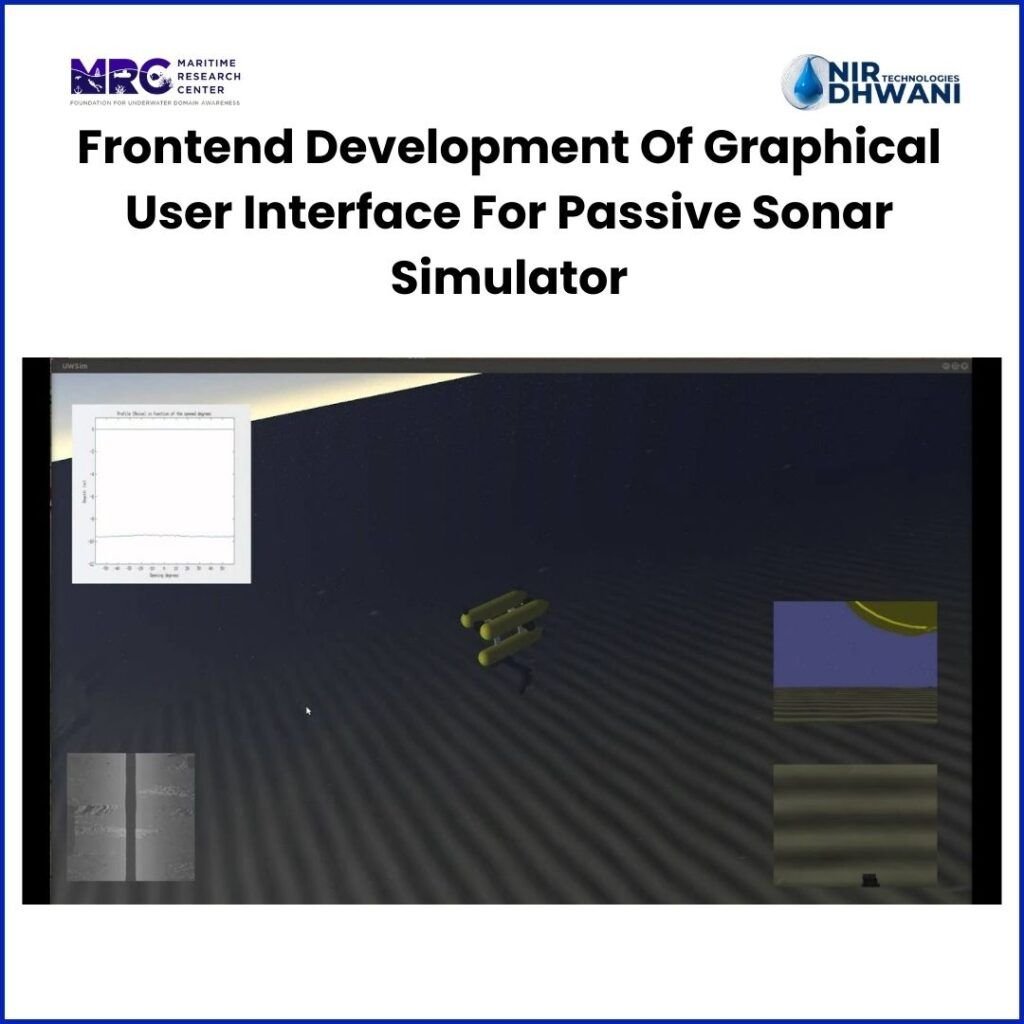The project discusses the development of a Passive Sonar Simulator (PSS) and its potential applications in various domains. It explains how a Graphical User Interface (GUI) can make the final product more intuitive and appealing to users. The applications of PSS include Navy-Submarine Deployment, Marine Conservation, Target Motion Analysis, and Obstacle Avoidance.
The project also describes the critical domains related to the development of the PSS. The PSS is designed to detect low-frequency noise from shipping vehicles without exposing itself. It also mentions related work on the GUI User Interface of the Multibeam
Sonar Tracer Software.
- A Graphical User Interface (GUI) can make a product functionally and aesthetically appealing and intuitive to use.
- The Passive Sonar Simulator can have applications in navy-submarine deployment, marine conservation, target motion analysis, and obstacle avoidance.
- The development of the Passive Sonar Simulator will involve the computer-generated simulation of audio and target signature to stimulate real sonar systems on a submarine or warship, providing realistic training for sonar operators.
- The project also discusses related work, such as the GUI User Interface of the Multibeam Sonar Tracer Software, which is used for monitoring pelagic fish schools surrounding a platform.
- Designing an intuitive and user-friendly GUI for the Passive Sonar Simulator.
- Developing accurate and realistic models of sonar detection and target signature.
- Addressing the challenge of anthropogenic noise pollution and its impact on marine life.
- Ensuring the accuracy and reliability of the simulator for training purposes.
- Optimizing the hardware and parameters of the simulator for effective obstacle avoidance.

- Improving submarine deployment for the Navy by allowing for more judicious use of sonars in areas with low anthropogenic noise.
- Contributing to marine conservation efforts by studying the impacts of anthropogenic noise on marine biota and using the simulator to define conservative shipping paths.
- Enhancing target motion analysis through the use of a multi-target tracking approach for narrowband passive sonar targets.
- Developing a low-power solution for obstacle avoidance in small underwater vehicles by optimizing hardware and AUV parameters with the help of the sonar simulator.



Leave a Reply